Guest editor Ole Scheeren’s Archipelago Cinema, Venice
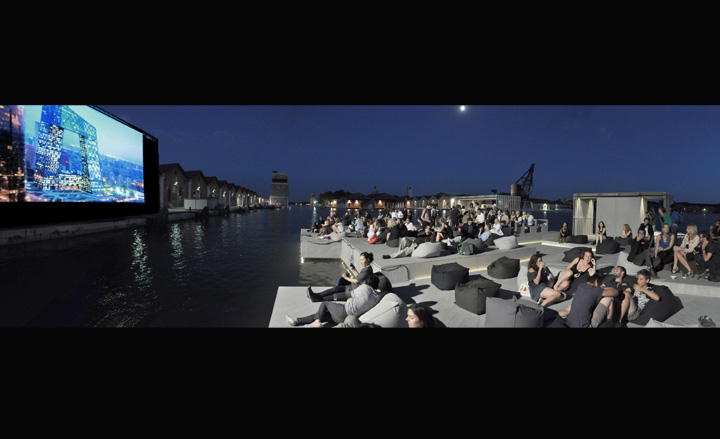
One of our trio of esteemed guest editors for the October issue, architect Ole Scheeren also dipped his toe in the waters of Venice during this year's 13th Architecture Biennale. The Archipelago Cinema, first seen moored in a steep cove on the Thai island of Yao Noi, was recreated and reborn as a venue in Venice, thanks to the flexibility of the original design and involvement of local craftspeople.
Formed from a series of rafts, lashed together with a grid of scaffolding, then clad with suitably maritime decking, the Cinema was then set adrift in the middle of the Arsenale basin, accessible only by water taxi. Strewn with comfy beanbags and the sparkling covers of our ultra-strict limited edition of Scheeren's guest-edited section of the magazine, the floating structure was the perfect alfresco setting for architecture films, screened over several days.
As the clear skies faded to stars on the opening night, the projector rolled and the drinks from Belvedere Vodka and Peroni Beer were doled out to the plucky guests. The aftershow party, with kind support from the KT Wong Foundation and our good selves, saw the platform shimmy to the sleek sound and vision created by Marc Feigenspann, Johannes Brecht and VJ Philipp Monjoie.
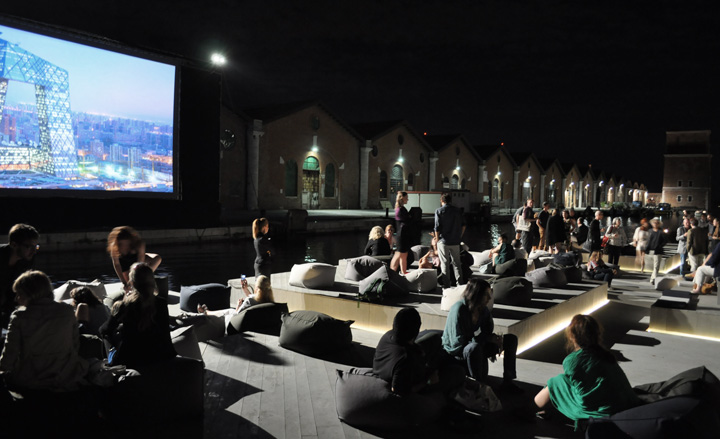
Strewn with benches and comfy beanbags, the floating structure was the perfect alfresco setting for architecture films screened over several days
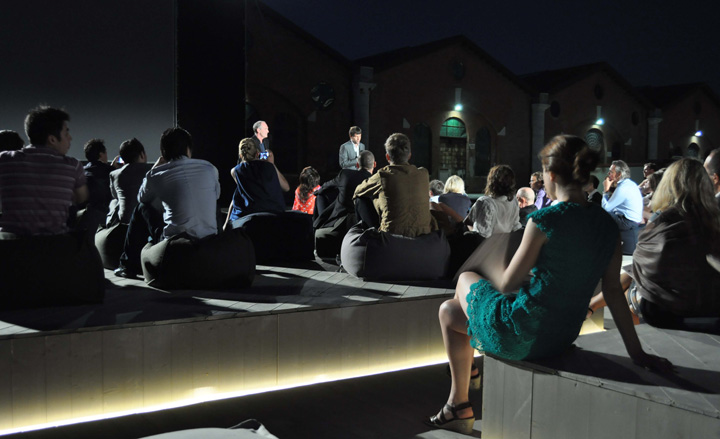
Formed from a series of rafts, lashed together with a grid of scaffolding, then clad with suitably maritime decking, the cinema was set adrift in the middle of the Arsenale basin, accessible only by water taxi. Here Ole Scheeren introduces the evening ahead
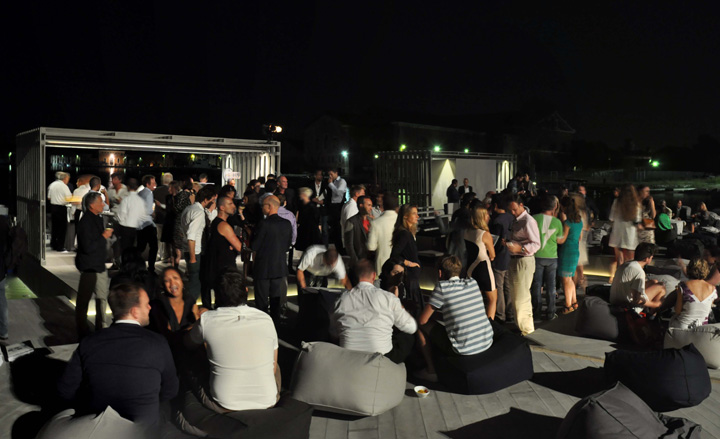
The aftershow party was co-hosted by Wallpaper* and the KT Wong Foundation
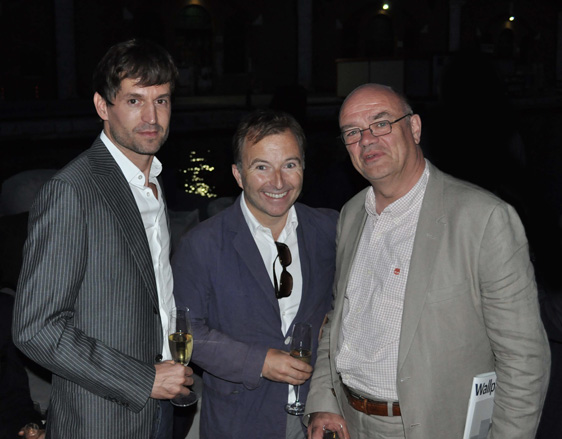
Architect and Wallpaper* guest editor Ole Scheeren, Wallpaper* Editor-in-Chief Tony Chambers and Barbican managing director Sir Nicholas Kenyon
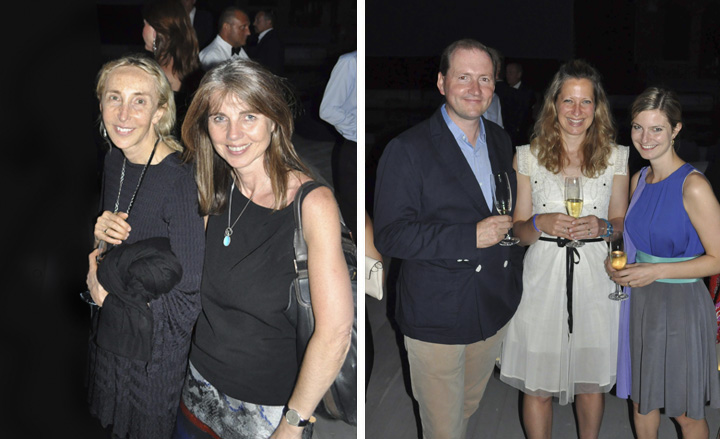
10 Corso Como-founder Carla Sozzani, and former Condé Nast Traveller editor Sarah Miller; Wallpaper* editorial director Richard Cook, WWD's Samantha Conti and The Daily Telegraph's Georgia Dehn
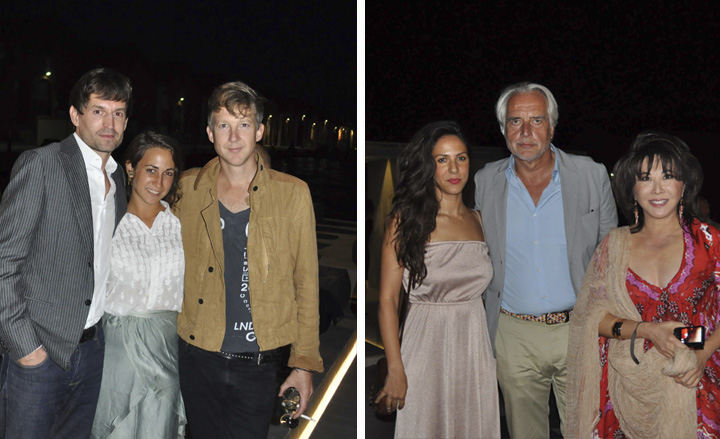
Ole Scheeren, jewellery designer Delfina Delettrez and publisher Jefferson Hack; Publicist Laura Colapietro, V&A director Martin Roth and KT Wong Foundation founder Lady Linda Wong Davies
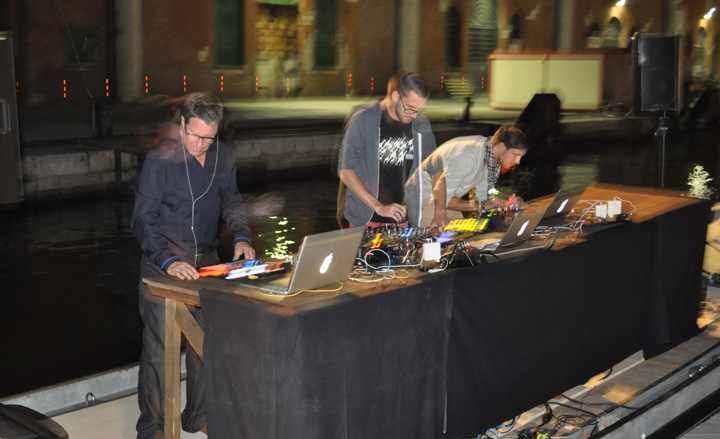
Music came courtesy of Marc Feigenspann, Johannes Brecht and VJ Philipp Monjoie
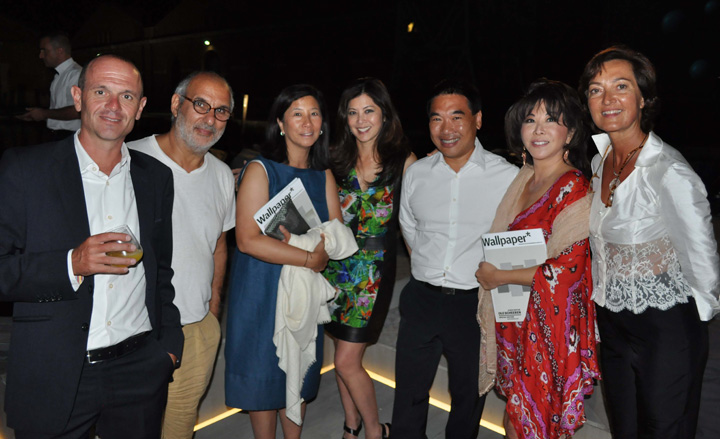
Guests, including BBC creative director Alan Yentob (second from left), were given limited edition books of Scheeren's guest-edited section of our October issue
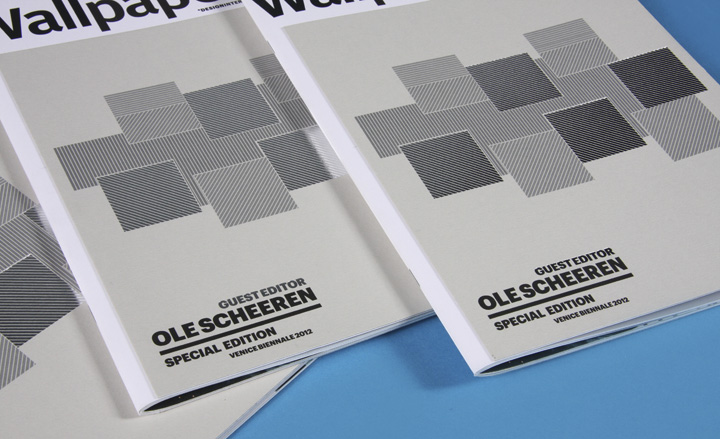
The book is fronted by a graphic, foil-blocked image of the floating cinema, seen from above
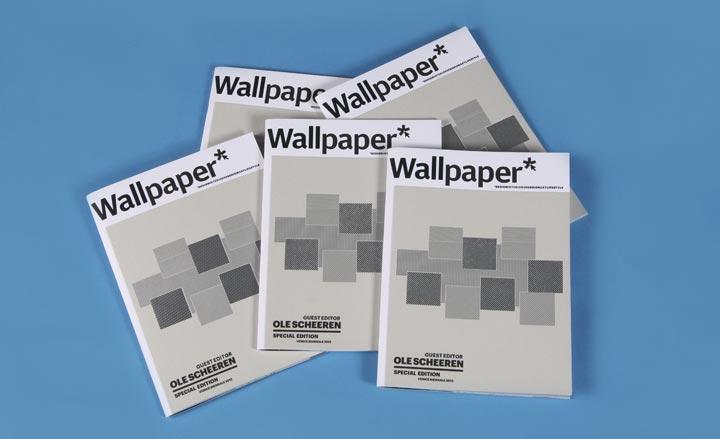
As Wallpaper* guest editor, Ole Scheeren has brought together artists and writers from Beijing, Bangkok, Singapore and Kuala Lumpur - all cities where his practice works - for a unique take on Asia's incredible urban life
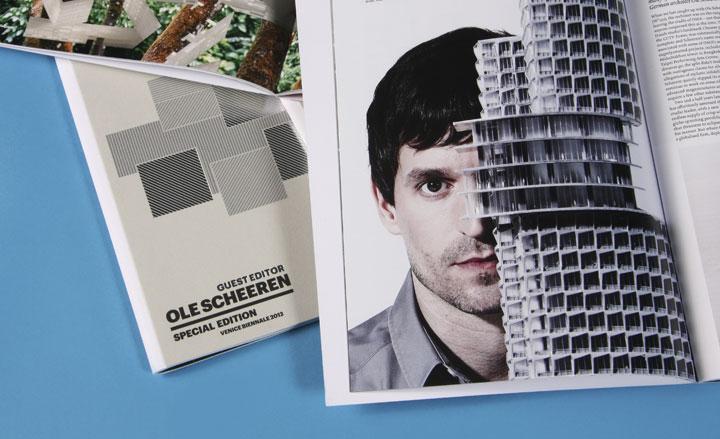
Scheeren, photographed by Mei Yuan Gui, with a model of his Angkasa Raya skyscraper, now under construction in Kuala Lumpar, Malaysia
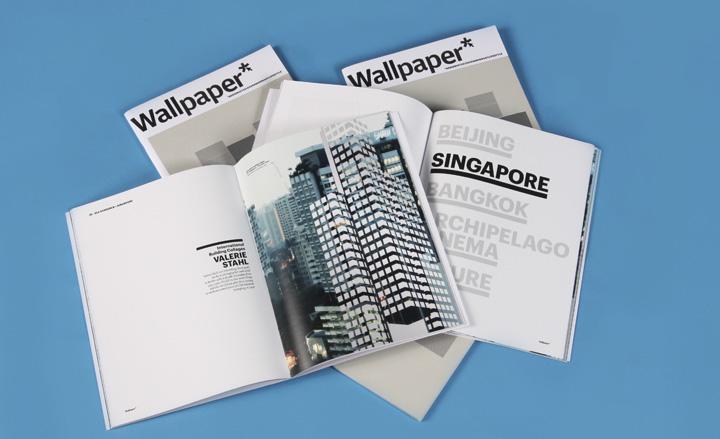
Valerie Stahl works as a photographer and artist in Berlin but fell in love with China and the rest of Asia after first coming to work on a commission for Scheeren in Beijing in 2008. The book includes works from her 'International Building Collages' series, Part I (Singapore), including 'The Scotts Tower', 2012
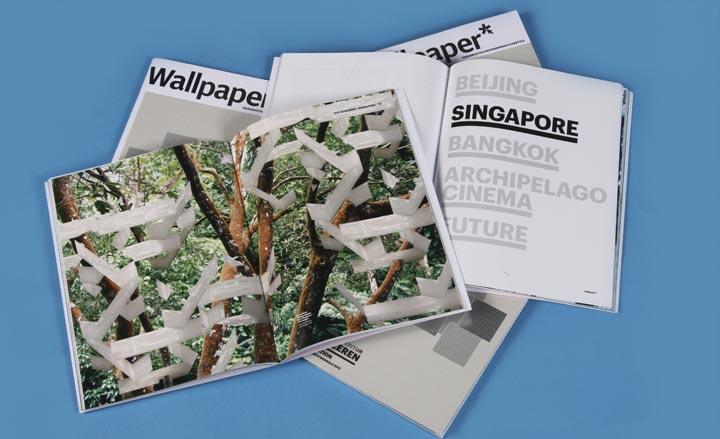
'International Building Collages' series, Part I (Singapore), 'The Interlace', 2012,
by Valerie Stahl
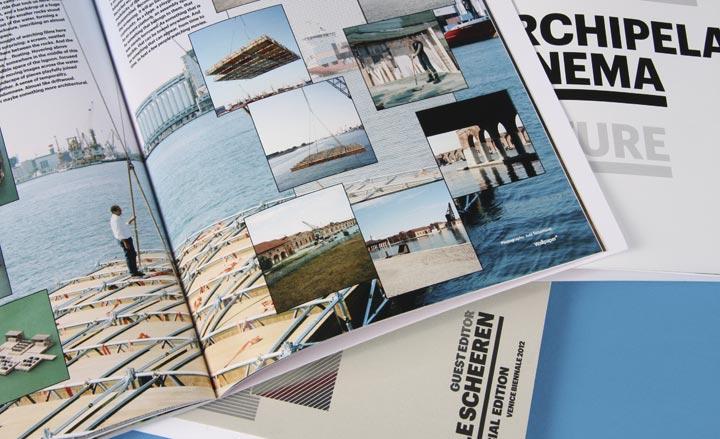
The platforms of the floating cinema are put in place in the Venetian lagoon
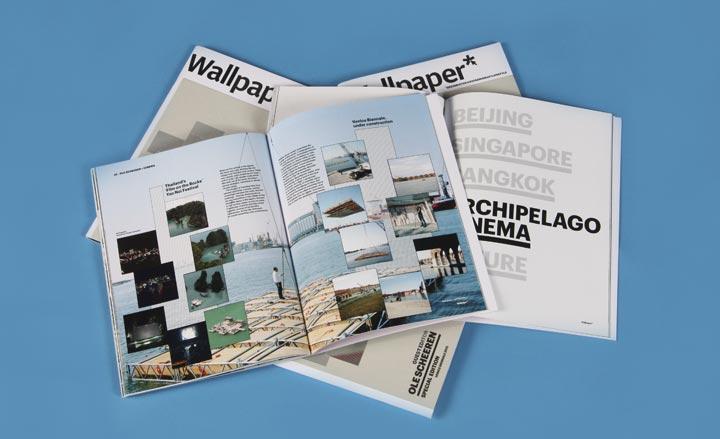
The cinema, photographed on its first outing in Yao Noi, Thailand (left), and under construction in Venice
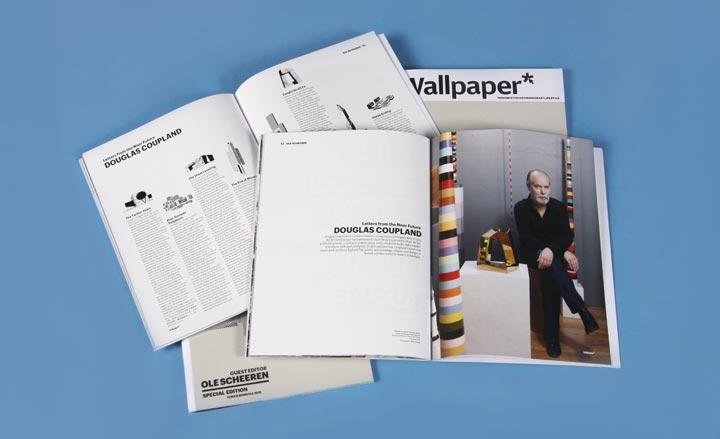
Canadian novelist, visual artist and designer Douglas Coupland contributed 'Letters from the Near Future' to Scheeren's guest edited section. Here, he is photographed in his Vancouver studio with his polished brass sculpture of the CCTV Tower
Wallpaper* Newsletter
Receive our daily digest of inspiration, escapism and design stories from around the world direct to your inbox.
Jonathan Bell has written for Wallpaper* magazine since 1999, covering everything from architecture and transport design to books, tech and graphic design. He is now the magazine’s Transport and Technology Editor. Jonathan has written and edited 15 books, including Concept Car Design, 21st Century House, and The New Modern House. He is also the host of Wallpaper’s first podcast.
-
 The Subaru Forester is the definition of unpretentious automotive design
The Subaru Forester is the definition of unpretentious automotive designIt’s not exactly king of the crossovers, but the Subaru Forester e-Boxer is reliable, practical and great for keeping a low profile
By Jonathan Bell
-
 Sotheby’s is auctioning a rare Frank Lloyd Wright lamp – and it could fetch $5 million
Sotheby’s is auctioning a rare Frank Lloyd Wright lamp – and it could fetch $5 millionThe architect's ‘Double-Pedestal’ lamp, which was designed for the Dana House in 1903, is hitting the auction block 13 May at Sotheby's.
By Anna Solomon
-
 Naoto Fukasawa sparks children’s imaginations with play sculptures
Naoto Fukasawa sparks children’s imaginations with play sculpturesThe Japanese designer creates an intuitive series of bold play sculptures, designed to spark children’s desire to play without thinking
By Danielle Demetriou
-
 2026 Olympic and Paralympic Torches: in Carlo Ratti's minimalism ‘the flame is the protagonist’
2026 Olympic and Paralympic Torches: in Carlo Ratti's minimalism ‘the flame is the protagonist’The 2026 Olympic and Paralympic Torches for the upcoming Milano Cortina Games have been revealed, designed by architect Carlo Ratti to highlight the Olympic flame
By Ellie Stathaki
-
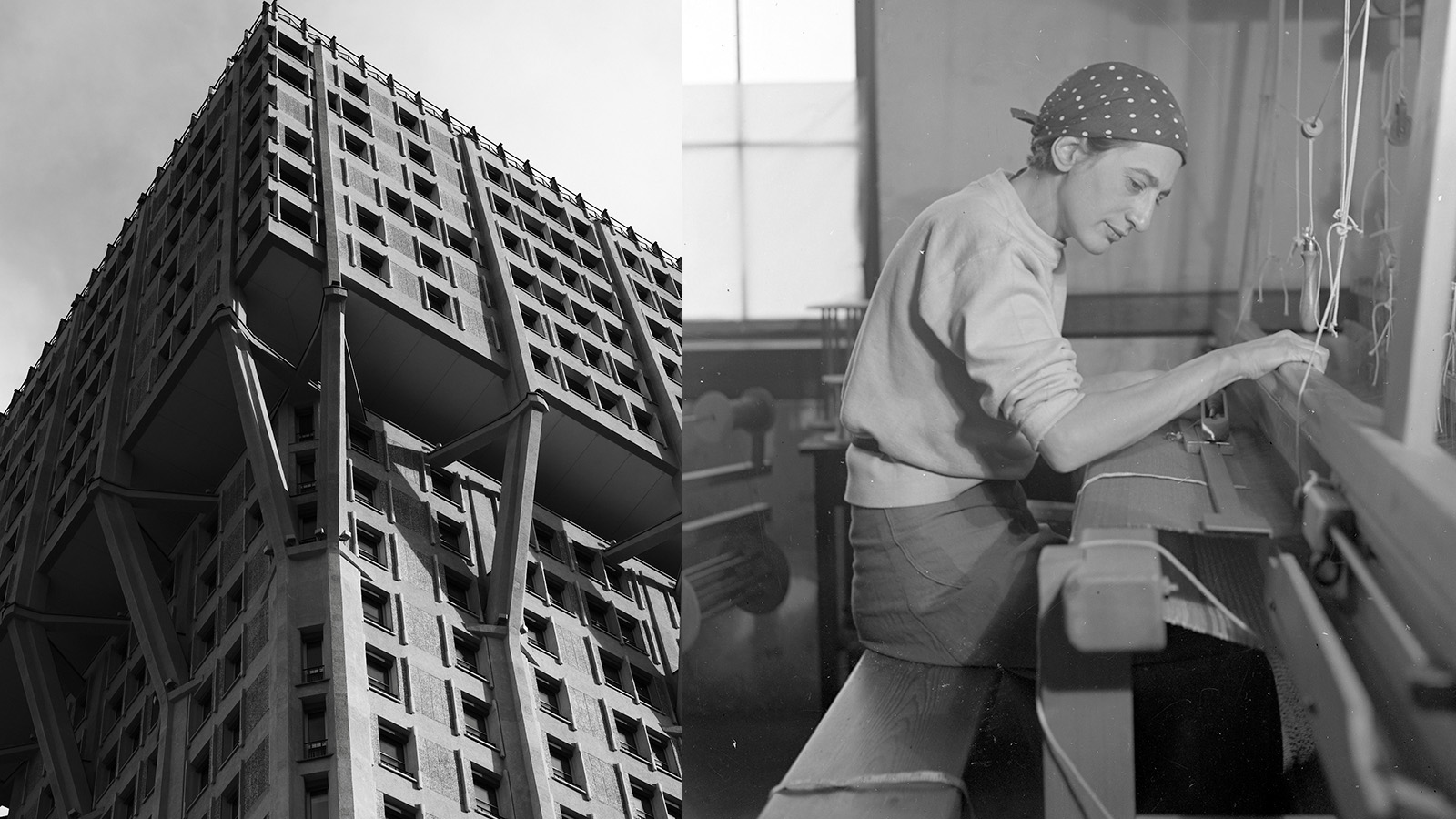 Anni Albers' weaving magic offers a delightful 2-in-1 modernist showcase in Milan
Anni Albers' weaving magic offers a delightful 2-in-1 modernist showcase in MilanA Milan Design Week showcase of Anni Albers’ weaving work, brought to life by Dedar with the Josef & Anni Albers Foundation, brings visitors to modernist icon, the BBPR-designed Torre Velasca
By Ellie Stathaki
-
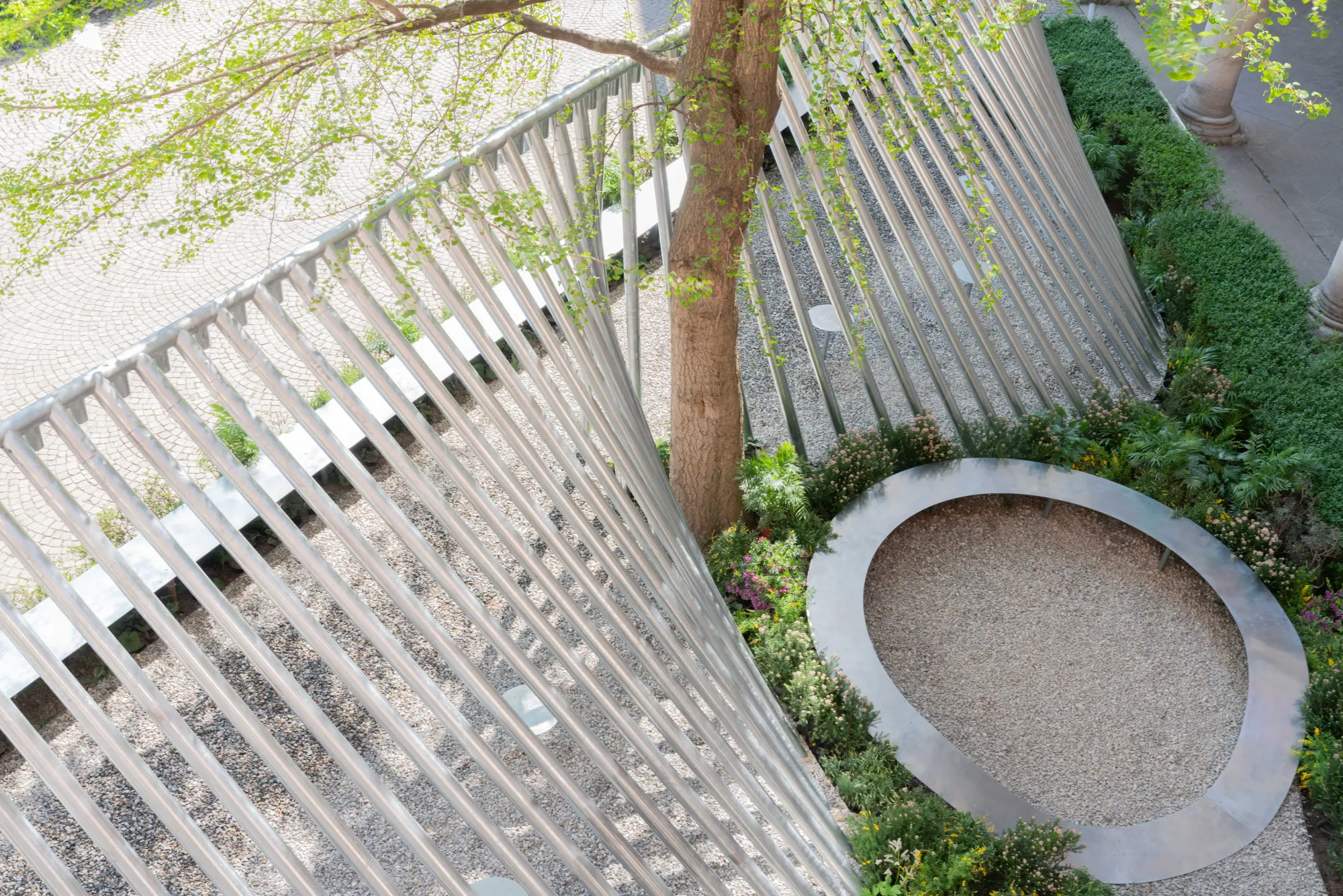 Milan Design Week: ‘A Beat of Water’ highlights the power of the precious natural resource
Milan Design Week: ‘A Beat of Water’ highlights the power of the precious natural resource‘A Beat of Water’ by BIG - Bjarke Ingels Group and Roca zooms in on water and its power – from natural element to valuable resource, touching on sustainability and consumption
By Ellie Stathaki
-
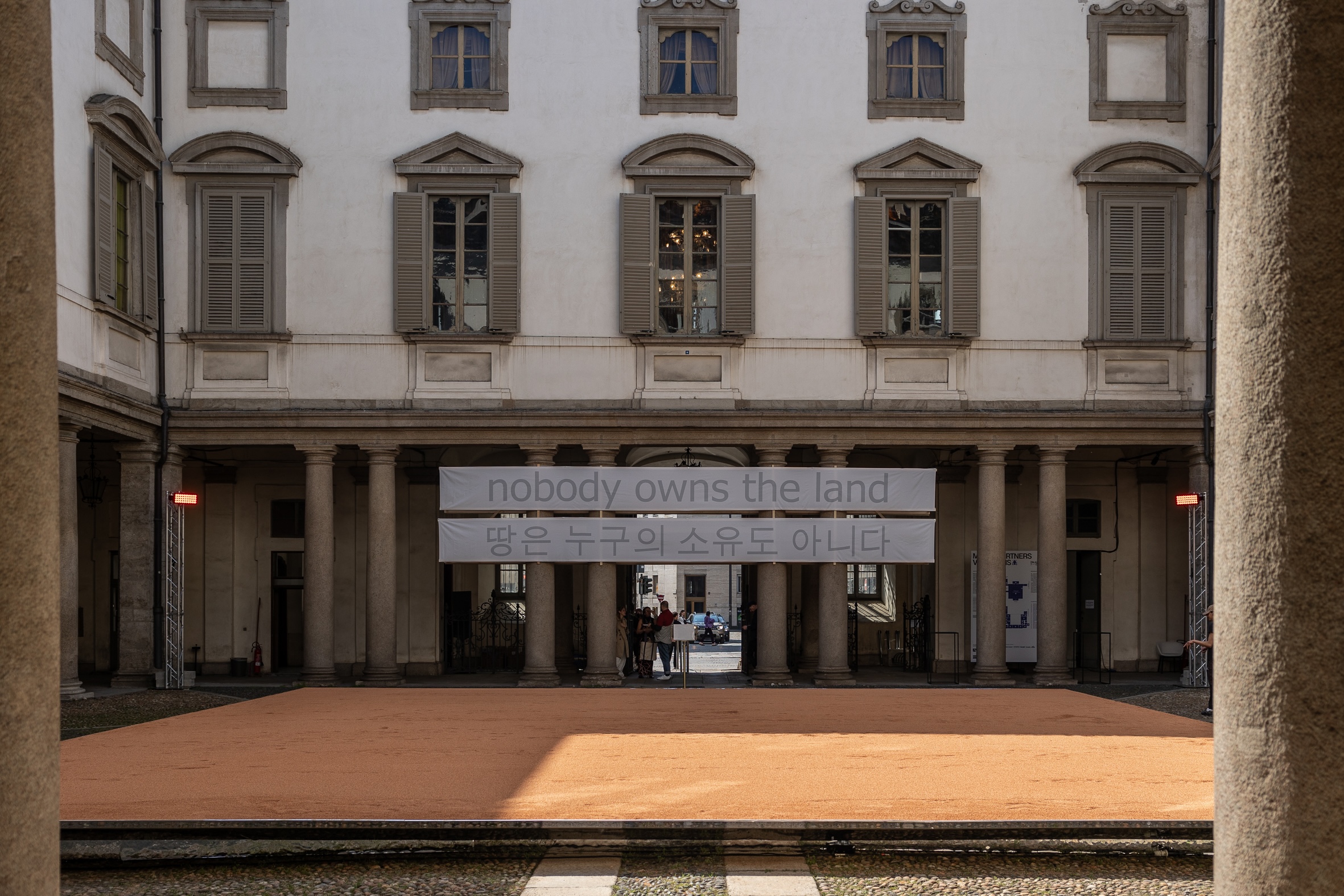 This Milan Design Week installation invites you to tread barefoot inside a palazzo
This Milan Design Week installation invites you to tread barefoot inside a palazzoAt Palazzo Litta, Moscapartners and Byoung Cho launch a contemplative installation on the theme of migration
By Ellie Stathaki
-
 The upcoming Zaha Hadid Architects projects set to transform the horizon
The upcoming Zaha Hadid Architects projects set to transform the horizonA peek at Zaha Hadid Architects’ future projects, which will comprise some of the most innovative and intriguing structures in the world
By Anna Solomon
-
 Is biodesign the future of architecture? EcoLogicStudio thinks so
Is biodesign the future of architecture? EcoLogicStudio thinks soWe talk all things biodesign with British-Italian architecture practice ecoLogicStudio, discussing how architecture can work with nature
By Shawn Adams
-
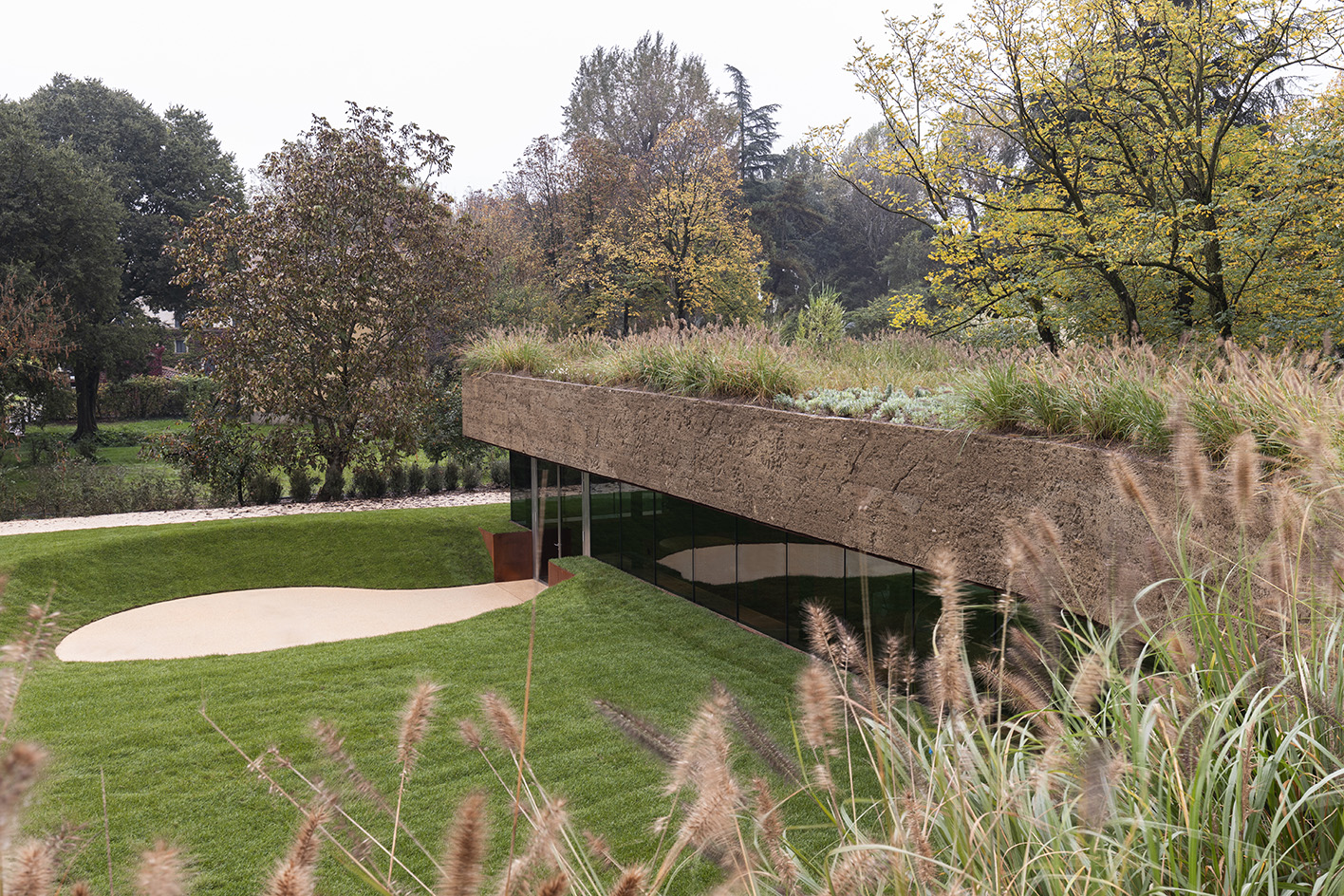 Meet Carlo Ratti, the architect curating the 2025 Venice Architecture Biennale
Meet Carlo Ratti, the architect curating the 2025 Venice Architecture BiennaleWe meet Italian architect Carlo Ratti, the curator of the 2025 Venice Architecture Biennale, to find out what drives and fascinates him ahead of the world’s biggest architecture festival kick-off in May
By Ellie Stathaki
-
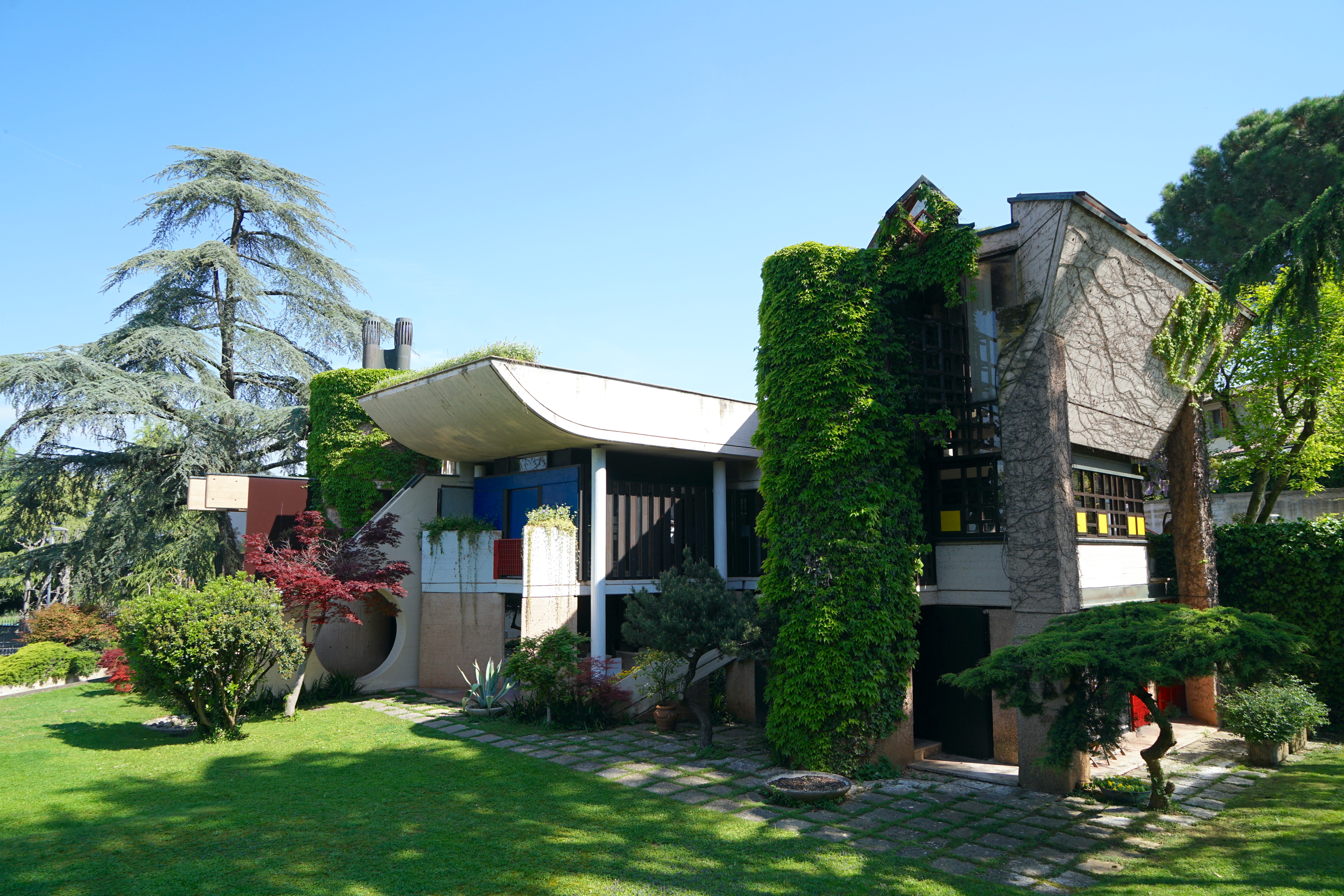 The brutal harmony of Villa Caffetto: an Escheresque Italian modernist gem
The brutal harmony of Villa Caffetto: an Escheresque Italian modernist gemThe Escheresque Italian Villa Caffetto designed by Fausto Bontempi for sculptor Claudio Caffetto
By Adam Štěch